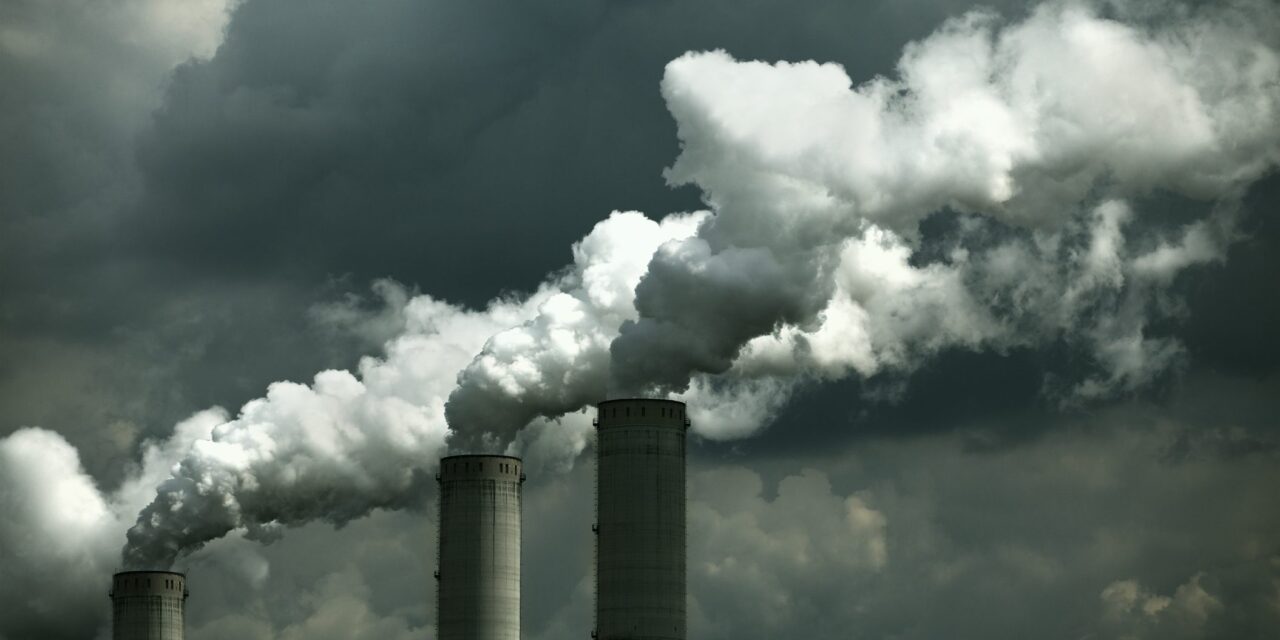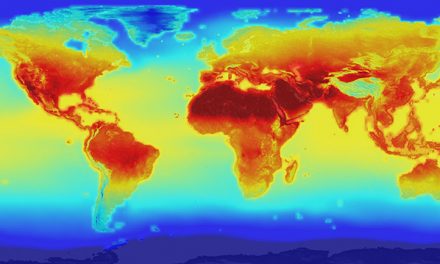Earth’s oil supplies are running out. That’s all there is to it. Not only that, but oil-based machines and industries are responsible for much of the polution that’s making a mess of the rest of the environment. Can we survive the coming burst of the “oil bubble”? And if so, how?
The answer is “yes”, but it’s going to take two things that have become dirty words to the Democratic party: leadership and change.
Apologies for the length. I couldn’t stop myself.
There are plenty of alternatives for replacing oil for power generation. Some, like coal, suffer from many of the same problems: air pollution and limited supplies. Others introduce a whole new set of problems – like biodiesel which, while clean, requires vast amounts of airable land. And then we’ve got the problem of plastics…
Fortunately, there seem to be solutions to all of these problems. Let’s tackle them from the simplest and work up, shall we?
Materials
Plastics are, thankfully, the simplest problem to solve. Even more than internal combustion engines, our modern society is reliant on plastics. The short-term solution here is simple: rely on plastics. Plastic production currently accounts for less than 5% of oil consumption, and much of the plastic produced can be recycled fairly cheaply and cleanly. Eliminate other sources of oil consumption, and you’ve just multiplied the sustainability of plastic production by twenty times. In the long term, we’ll need to focus on materials research, to find alternative ways of producing plastics and alternative materials that can replace them.
We also need to focus on something that I’ll come back to later: decomposition. We have to accept that, eventually, Stuff Wears Out. We need to design things, from the materials they’re made of on up, so that they can naturally and easily return the vast majority of the matter bound up into them into the environment. This probably means more organically-based materials, but I’m confident there’s clever things that can be done here with chemistry and (gasp) genetic engineering.
Power
Next up, we get energy extraction. This is, amazingly, the second-easiest problem to solve. We have two massive, and largely untapped, sources of energy that we know of – the sun and the Earth itself. There won’t be a one-stop-shop solution to our energy needs. But by combining tidal, wind, solar, and geothermal power with efficiency-conscious consumption, we can match – or possibly exceed – current energy production.
Here we get to something that’s going to be a recurring theme in this essay – space. It’s much easier to gather energy up there in the wild black yonder than it is down here on Earth. Solar power, for starters, becomes many times more efficient, and solar power cells can be constructed much more cleanly in orbit or on the moon than they can on Earth. Sure, we then have the problem of transmitting the energy back down to earth, but that’s not really that hard. We already know how to do it safely and cleanly using microwaves. (And yes, it is safe and clean) Not only that, but any sensible space effort would involve the construction of a space elevator, and it seems to be possible to transmit power along the elevator itself.
(As an aside, Rimjob has a good diary on this at the Big Orange. Spoiled, unfortunately, by the usual ignorant commentary.)
We also get to the big N – Nuclear Power. Yes, we probably are going to have to use nuclear power. But we’re going to have to use it right. This means that we’re going to want fission plants using safe, clean designs – and yes, they do exist. They also generate much more energy than traditional plants, as they use significantly more of their fuel, and the energy that gets wasted in the form of long-lived radioactive elements in traditional plants gets channeled into more useful forms. We’re also going to have to push to get usable fusion reactors as, although hydrogen is tough to get, they have much better long-term prospects. Conservative estimates give us more than a thousand years of power from nuclear fission reactors using fissionables buried in the Earth’s crust alone, and considerably more than that if we turn our attention to the rest of the solar system.
There are many more methods of extracting useful energy from our surroundings, but I will not discuss them here. Many of them, while probably more feasible and realistic than the skeptics in the audience want to admit, are years in the future, and should not be depended upon.
Living
Now that we’ve got energy and materials solved, we come to the usual big sticking point: lifestyle. We will not be able to maintain the lifestyle we’ve become accustomed to in the 20th century. This is a good thing. Our 20th century lifestyle has been wasteful, excessive, and poorly suited to the one thing that really matters: human happiness. Surely we can do better.
In fact, I’m convinced we can do better.
Let’s start with the usual sticking point: transportation. Unfortunately, we probably won’t be able to get rid of the car entirely for a long time. We can, however, eliminate most cars. Good. The bloody things are hideously inefficient and almost entirely unnecessary. Instead of focusing on producing more a better cars, how about we direct our attention at replacing them? I think it’s safe to say that most cars are used for short-distance transportation within a city. These are the easiest sort to eliminate: replace them with a well-designed, economical, and environmentally-friendly public transmit network. Such a network could, startlingly enough, reduce transit times within a city.
Not only that, but the resulting urban structure would almost certainly be more pleasant and convenient for humans to dwell in. An excellent description of the necessary changes can be found in Car-Free Cities, which I beg my readers to read and discuss. Their plan, to me, appears feasible, and they present (briefly) mechanisms for converting existing cities. It is important to note that their design for a car-free city consumes substantially less space for the same population than a modern city, eliminating urban creep at the same time as it makes lives better.
Outside cities, things become slightly more difficult. City-to-city and city-to-rural centre transit can be achieved by longer-range trains. I’m a big train fan and, so, am naturally drawn to this method of transportation. A well-designed train line has minimal economic impact, provides rapid transportation, and, above all else, is pleasant to travel on. Then we’re left with the problem of rural transportation. I’m afraid that I can see no way to eliminate cars here. There probably is one, but it would require even more massive restructuring than car-free cities. However, this can be deferred – again, the amount of oil consumed is tiny.
So, step #2: dwellings. Car-Free Cities has some details about the changes that would be necessary here. A Pattern Language and it’s related books provide even more. I’m planning on tracking down copies of them and devouring them in detail in the near future, but again, we see the same themes as Car-Free Cities: more pleasant places to live that are also more economical.
Finally, we come to manufacturing. This is, I will admit, a tough nut to crack. I believe that the key here involves a complete 180 from our current worldview. Things must be designed to last, to be easily and economically repairable, to be produced near the place where they will be used, and to decompose cleanly into the environment when they can no longer be repaired. Minimize waste and other leftovers. We can do this, we just have to say “You know what? We’re going to do this.”
Locality
The change with the largest implications – in fact, I’m not even going to try and guess at them – is local production. This is a total change from our current model but, I feel, a necessary one. Not only does it reduce the amount of energy spent transporting things from their factory at point A to their use at point B, half a world away, but it improves the economy. With the focus on local production, you have a focus on local industry and local jobs. This has been the traditional economic model, and when it has been practiced, it has created a much more prosperous society. In fact, I’d go above and beyond local production and say that we need a massive focus on the local. On the local culture, on the local environment, on the local people.
Plus, we have a much more promising candidate for global trade than knick-knacks and toys. Culture. We can move it from point A to point B with next to no cost thanks to the very miracle that brings you these ramblings of mine: the Internet. Again, making good use of it would require substantial lifestyle changes, especially in the realm of encouraging diversity rather than attempting to enforce homogeniety, but the potential leaves me in awe.
This also applies to agriculture. The modern mechanisms of making food, frankly, suck. Again, locality to the rescue. We need to focus on cheaply finding ways to locally grow the food we need. This can range across everything from sensible farms to hydroponics to backyard, rooftop, and windowsill gardens. Sure, a windowsill planter isn’t going to miraculously solve world hunger. But imagine a million of these. Each might only provide a family with a couple of meals a month, but that’s a couple of meals a month that don’t have to be grown, packaged, preserved, and transported to them!
Yes, this is going to mean a change in diet to include things that are appropriate for the climate and seasons of the place you live. There’s that C word again!
On top of that, we’ve got two other solutions that will help. 1) Move people out of marginal regions. 2) Stop building on fertile land.
Growth
Now, we come to the trickiest point of all. Growth. The societies of the 19th and 20th centuries were obsessed with it. I think it’s worthless. I don’t give a fuck about more. More is worthless to me. What I want is better. I want myself, my neighbours, and all of my fellow human beings to lead better, happier lives than we ever have before. And you know what? That’s sustainable. 100% sustainable.
Now, with that said, I’m going to contradict myself and say that growth is also important. Humans need a frontier. It’s built-in, along with the hair, the poorly-designed spine, and the tendency to see beards in the sky. But growth here on Earth is worthless. We’re just spinning our wheels. We need to stretch out and up. It’s not an option, people. Space is there waiting for us. Let’s grab the future with both hands.
Conclusion
I’ll admit it. This is a utopian, optimistic, blue sky diary. Personally, I’d rather work for the best than give up and brace for the worst. I’ll be the first to acknowledge that the changes I’ve talked about in this diary won’t be easy. We’ll be fighting massive cultural and economic inertia. People want to keep living in the world the grew up in, even if the alternative’s better. And a small minority has it very good right now, and will fight live devils to keep that, even if they have to kill all other life on this planet to do it. Expect to hear “unrealistic” and “hippy” bandied about a lot.
The thing to keep in mind is that I’m not proposing one big solution to everything. We’re not going to be able to find a single replacement for oil. It’s just not going to happen. We are going to be able to find a whole lot of little changes and replacements.
And this conclusion is where the l-word comes in: leadership.
We can do better. So let’s do better.
Who’s with me?
(Please comment, please. While this is my vision, I think we need a real discussion of this, so we can formulate a solid plan and push forward. Come on, pipe up. You know you want to!)

This work is licensed under a Creative Commons Attribution-NonCommercial-ShareAlike 2.5 License.<!–
–>
[editor’s note, by Egarwaen] The above means that you can repost this essay somewhere else, or even edit it and repost it, as long as you give me credit. I’d ask that you also link to the original diary here on BT, please.





